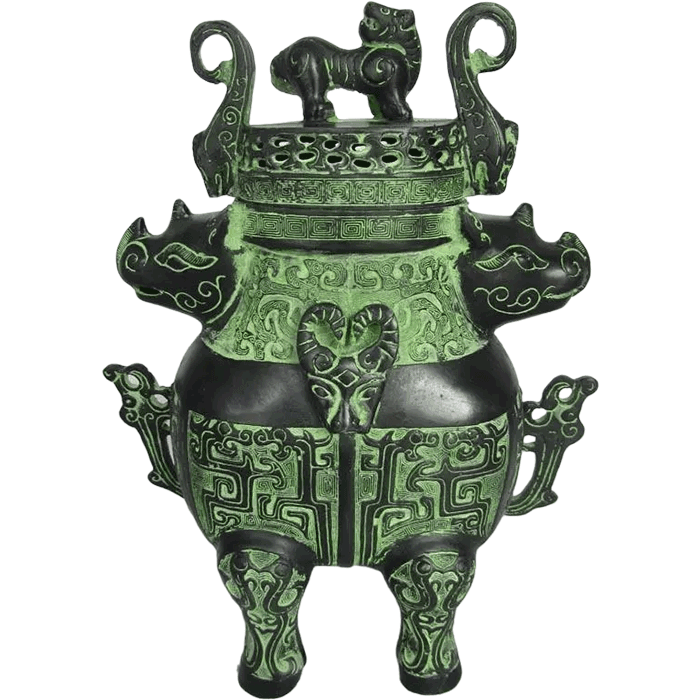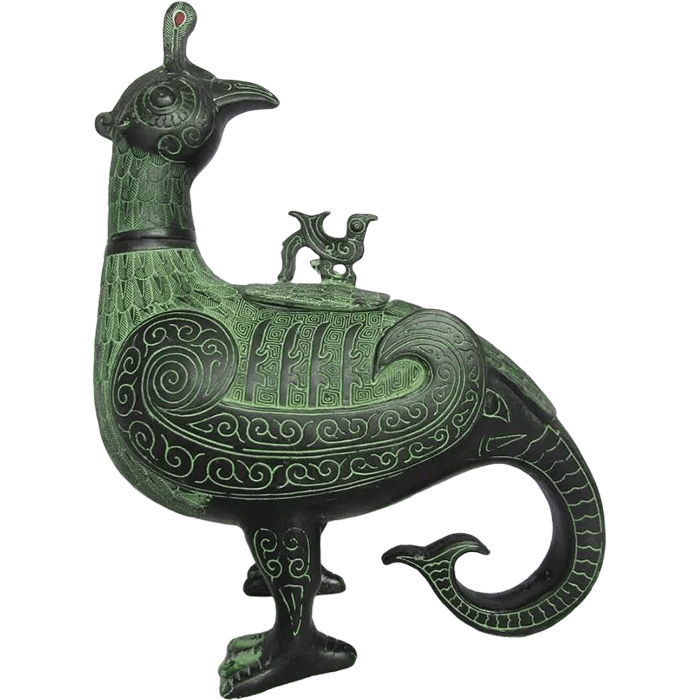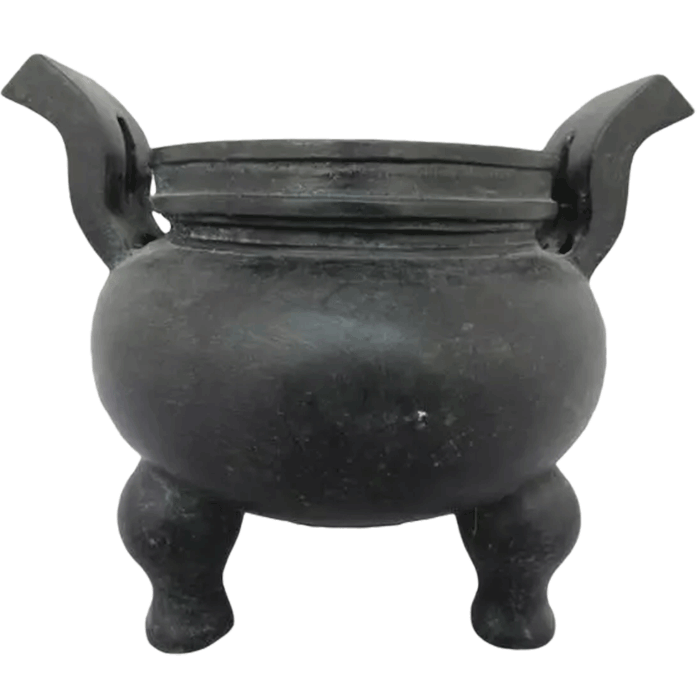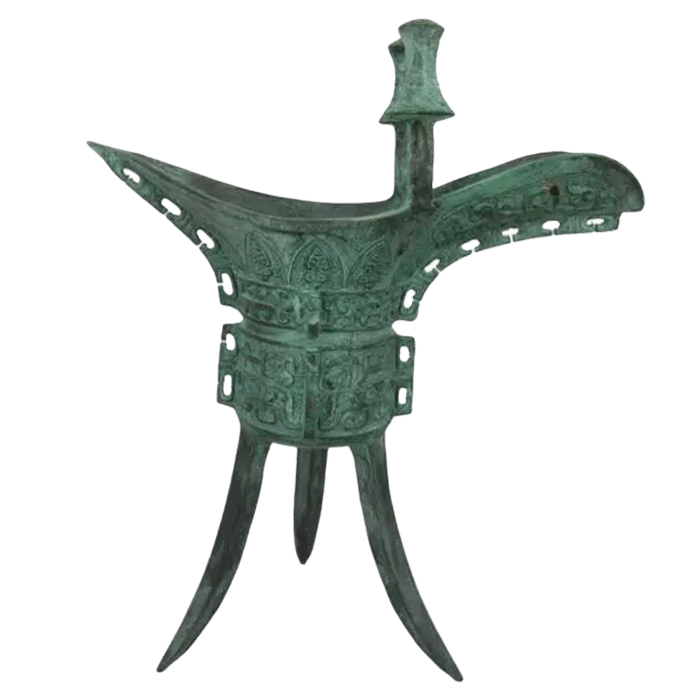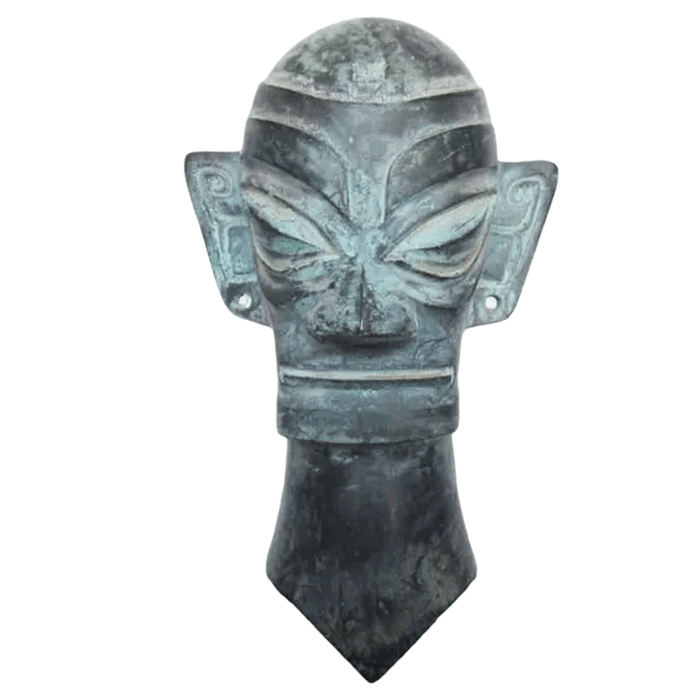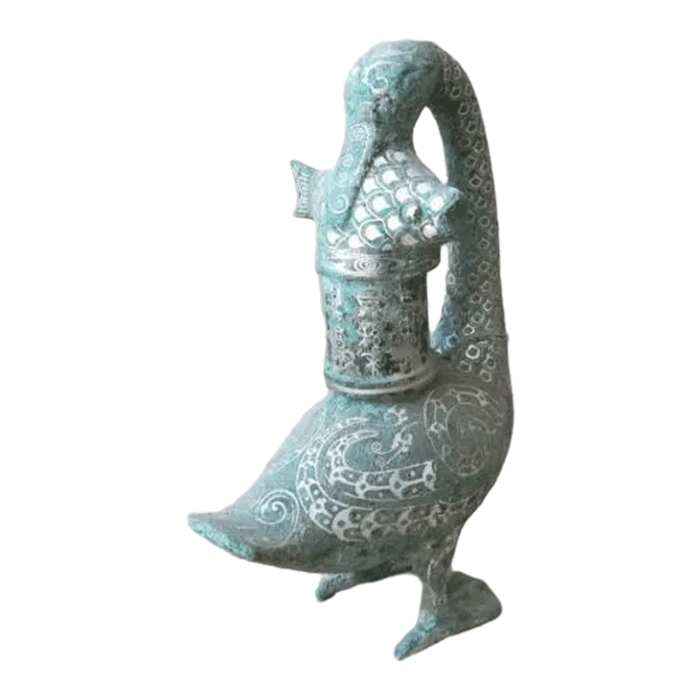Bronze Statue and Mao Gong Ding
bronze statue
Unearthed from Sanxingdui
Shang Dynasty
Largest bronze figure statue
In 1986, in Sanxingdui, Nanxing Town, Guanghan, Sichuan, the largest and most complete bronze statue in China was unearthed. The statue is 262 centimeters high, weighs more than 180 kilograms, and the distance between the two ears is 138.5 centimeters. It has been cast for more than 3,000 years and is the highest and most complete bronze standing statue in existence. From a global perspective, the Sanxingdui Bronze Talisman is also the largest bronze statue of a figure in the same period, so it is also known as the "King of Bronze Statues in the World".
identity mystery
This "monument" statue of a tall man has a high nose bridge, big eyes, deep eye sockets, and big ears. Its appearance is very different from that of the Central Plains people. What identity does it symbolize?
At present, there are several different opinions in the academic circles: one opinion is that the bronze Dali man is the image of a generation of Shu kings, who is not only a political king but also the leader of a group of witches. Another opinion is that it is the image of the theocratic political leader of ancient Shu. There is another opinion that its image resembles the shape of the word "corpse" in ancient Chinese characters, and it should be interpreted as "standing corpse". The "corpse" mentioned in this point of view, generally speaking, has the dual identities of the chief priest who presides over the ritual of offering sacrifices to the gods and the victim who is the symbol of the gods.
We tend to believe that he is the most authoritative leader of the Sanxingdui ancient Shu Kingdom who combines the three identities of god, witch, and king, and is the symbol of the highest power of theocracy and kingship. The square-pattern belt ornaments worn by the portraits should have the nature of the "legal belt" that symbolizes authority. The several sets of dragon pattern decorations on his clothes seem to have the meaning of interacting with the gods, and the clothes he is wearing are probably the vestments of wizards.
What are you holding?
The most mysterious thing about the bronze portrait is that the central axes of the left and right hands are not in a straight line. What exactly is it holding? Did he originally hold (hold) some kind of magic weapon in his hand?
Some people think it is a cong, some people think it is a scepter, some people think it is a big ivory, and some people think it is similar to the god tube or stick tube of the Bimo (priest) of the Yi nationality. a certain attitude.
Casting process
The height of the portrait is 180 cm, the overall height is 260.8 cm, and the weight is about 180 kg. The statue is made by segmental casting method. The body is hollow and divided into two parts: the portrait and the base. The portrait wears a high crown, and wears a three-layer garment with narrow sleeves and half-arms. The decorations on the garment are complicated and exquisite, mainly dragon patterns, supplemented by bird patterns, insect patterns, and eye patterns, etc., and a checkered belt on the body. The exquisite and delicate production of ornaments is so far unique in the archaeological history of the Xia, Shang and Zhou dynasties. His hands are clasped in a hollow shape, and his arms are slightly encircled in front of his chest. He wears anklets and stands barefoot on a square monster seat. Its overall image is dignified and solemn, and it seems to show that a great man with all-powerful talents and great power is doing his work. The square platform on which it stands can be understood as the dojo where it is practiced—an altar or a sacred mountain.
Mao Gong Ding
Western Zhou Dynasty
The bronze with the most inscriptions
Maogong Ding, a bronze ware in the late Western Zhou Dynasty, is named after the maker of the vessel, Maogong. Unearthed in Qishan, Shaanxi in the 23rd year of Daoguang reign of the Qing Dynasty (1843), it was collected in the National Palace Museum in Taipei, and is one of the three treasures of the National Palace Museum in Taipei.
pass on history
The treasure of the town hall "Maogong Ding" collected in the National Palace Museum in Taipei
Qing Dynasty
In the 23rd year of Daoguang in the Qing Dynasty (1843), the Maogong tripod was dug out by Dong Chunsheng, a villager in Dongjia Village, Qishan County, Shaanxi Province, in the west of the village. A well-known antique dealer came here and bought it for 300 taels of silver. However, when the tripod was shipped, it was blocked by another villager, Dong Zhiguan, and the transaction was not completed. The antique dealer bribed the magistrate with a lot of money, and Dong Zhiguan was arrested and imprisoned, and he was convicted of hiding the national treasure. The tripod was finally transported to the county government, where it was quietly transported away by an antique dealer. Zhang Shihu, the son of Zhang Yanchang, had seen the tripod by chance. Later, the Maogong tripod fell into the hands of Su Yinian, an antique dealer. In the second year of Xianfeng (1852), Chen Jieqi, a Beijing epigrapher and collector, bought it from Su Yinian again, and rewarded Su Yinian with 1000 taels. After Chen Jieqi died of illness, his descendants sold the tripod in 1902 and it was owned by Duan Fang, governor of Liangjiang. On November 27, 1911, Duan Fang was sent to Sichuan to suppress the road protection movement and was killed by the revolutionary army.
Republic of China
During the period of the Republic of China, the descendants of Duanfang bequeathed the Maogong tripod to the Sino-Russian Daosheng Bank, which was run by the Russians in Tianjin. British journalist Simpson offered US$50,000 to buy from Duan's family, but Duan's family thought the money was too little and refused to part with it. At that time, patriots strongly called for the protection of national treasures. Mao Gongding was transferred to Ye Gongchuo, a great collector who was the chief of transportation of the Beiyang government at that time, and later the curator of the Chinese Academy of Sciences, and deposited in the mainland bank. When the Anti-Japanese War broke out in 1937, Ye Gongchuo avoided Hong Kong, but Mao Gongding failed to take it away, and hid it in his apartment in Shanghai. Since Ye Gongchuo bought Mao Gongding under a false name, the Japanese could not find out its whereabouts. Ye Gongchuo asked his nephew Ye Gongchao to dedicate the tripod to the country one day. Maogong Ding changed hands several times, and was almost taken away by the Japanese military. Fortunately, Ye Gongchao tried his best to protect him, and vowed not to admit knowing the whereabouts of Baoding. To save his nephew, Ye Gongchuo made a fake tripod and handed it over to the Japanese army. After Ye Gongchao was released, Xia Mi fled to Hong Kong with Mao Gongding in 1941. Soon, Hong Kong was captured by the Japanese army, and Ye Jia asked his German friends to return Mao Gongding to Shanghai. Later, due to the hardship of life, the Maogong Dingdian was mortgaged to the bank, and the rich merchant Chen Yongren paid for the redemption, so that Maogong Ding would not be wandering abroad. In 1946, Chen Yongren donated the Maogong tripod to the government, and the following year it was transported from Shanghai to Nanjing, where it was collected in the Central Museum. In 1948, the Kuomintang retreated to Taiwan, and a large number of precious cultural relics from the Nanjing Palace Museum moved south to Taipei.
After moving to Taiwan in 1949
In 1965, the National Palace Museum in Taipei was officially completed. The rare treasure Maogong Ding became one of the treasures of the National Palace Museum in Taipei. It was later used as one of the two major commemorative medals of the National Palace Museum in Taipei.
Heritage features
The Maogong tripod is 54 centimeters high, 27.2 centimeters deep, 47 centimeters in diameter and weighs 34.5 kilograms. The tripod has straight ears, a hemispherical abdomen, and a foot in the shape of a hoof. It is short, dignified and powerful. The rim of the tripod is also decorated with ring-shaped heavy ring patterns. The whole shape is thick and dignified, the ornamentation is simple, elegant and simple, and it has a strong breath of life. It is a representative work of the tripod in the late Western Zhou Dynasty that turned from religion to secular life.
The inscription on Mao Gong Ding is nearly 500 characters in length (there are three versions of 497 characters, 499 characters, and 500 characters). The content is roughly as follows: At the beginning of King Zhou Xuan's accession to the throne, he wanted to revitalize the government, so he asked his uncle Mao Gong to manage the government affairs inside and outside the country, and he was diligent and selfless. Children and grandchildren Yongbao.
Sculpmart is a professional bronze art and bronze wares manufacturer providing Chinese Bronze Handcraft arts which will allow you to have a chance to own a masterpiece of Chinese bronze sculptures. If you like, you may choose the style to customize, send us the image and design, our craftsman will reproduce and cast a perfect bronze ware for you.


